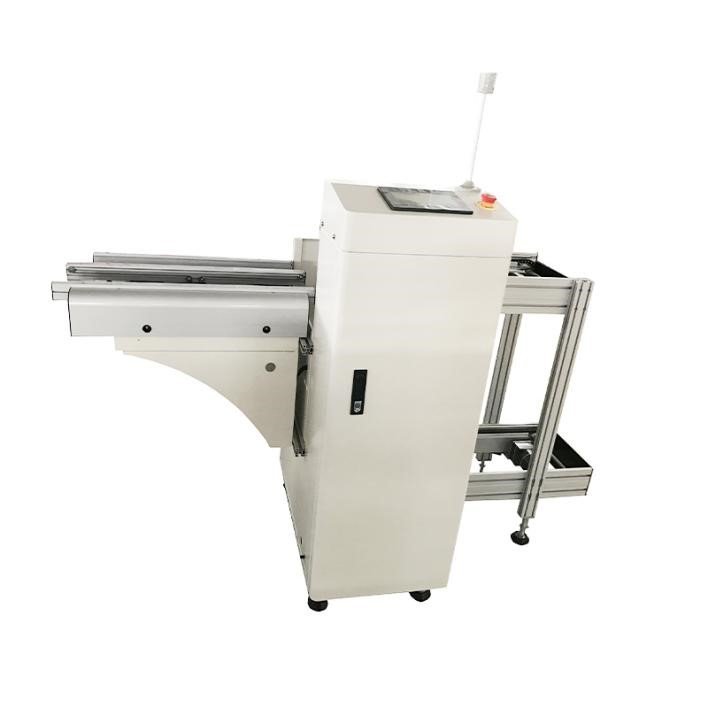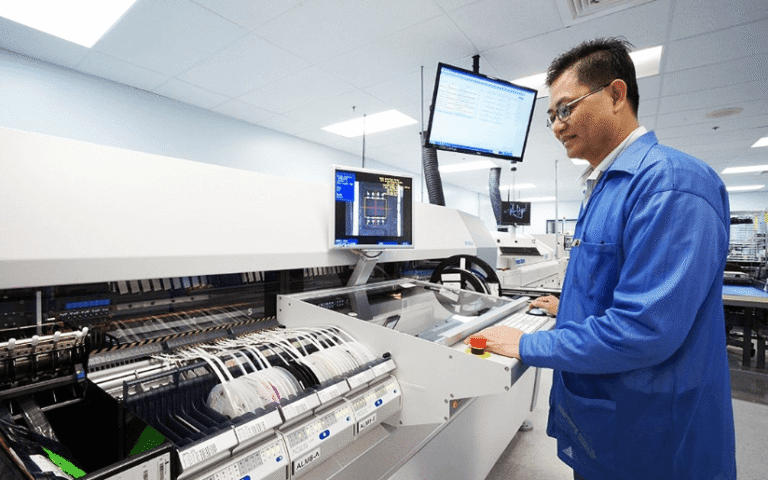Can Flexible Monitors Replace Traditional Screens as a Greener Choice?
Environmental concerns are among the most significant global issues of our time, and industries across the board are being called upon to respond in innovative, sustainable ways. Energy-intensive, high-waste, resource-depleting processes and products in all sectors of the economy are under the spotlight. The technology sector, which has long been criticized for its power-hungry equipment, production methods, and throw-away electronics, is no exception. In particular, displays are among the most energy-intensive products within the tech sector. Ranging from small screens to multi-monitor gaming setups, traditional monitors use a significant amount of electricity and other resources, contributing to our overall environmental footprint. Enter flexible monitors. The recent development of bendable and folding screens prompts the question: are they able to fully replace traditional monitors? Can they represent a greener alternative to standard monitors and computer displays?
Flexible monitors have the potential to be portable, adaptable, and far less energy-intensive. However, their ability to replace traditional monitors in terms of production scale, efficiency, and consumer needs and preferences is far from certain. This article will assess flexible monitors as a green choice compared to traditional displays, examine their technological innovations and challenges, and discuss their potential in the future of sustainable technology.
Flexible Monitors: What Are They?
Flexible monitors are bendable or foldable display devices that are made from flexible substrates instead of glass. This means that they can be bent, curved, or folded to a certain degree without cracking or breaking, unlike traditional monitors, which are fixed in shape. Flexible monitors use advanced display technologies such as OLED (organic light-emitting diode) or LED backlights that allow for these new formats without compromising resolution, brightness, or color accuracy.
The most exciting aspect of flexible monitors is that they are versatile in use. Flexible monitors can be used as standard desktop or laptop monitors, but folding monitors can be bent or rolled up, and others can be folded away when not in use, providing additional portability and convenience. Not only are bendable monitors great because they save space or can be easily packed, but their flexibility also enables more efficient use of space in the supply chain. Bendable and folding monitors take up less room in storage and packaging, enabling more monitors to be shipped per container and reducing the need for large glass packaging that is wasteful in production and adds weight to products, further driving up shipping emissions. A 22-inch monitor that can be rolled or folded is an ideal example of a green screen option compared to a traditional display of the same size.
Foldable monitors are also particularly useful for those who travel a lot or need to frequently pack their workstations. Digital artists, video editors, laptop manufacturers, and even business executives need extra screens that they can take with them on trips and fold away or roll up when not in use. However, even students and casual users can benefit from portable displays, as they’re lightweight, easier to carry, and often the best portable monitor for laptop.
Do Flexible Monitors Have Environmental Advantages?
Flexible monitors have several potential advantages over traditional, rigid screens. These benefits range from energy use to ease of use and reduced e-waste.
Energy Efficiency
The single most important factor in the environmental impact of a monitor is the amount of electricity it uses during operation. Flexible displays, particularly OLED and Mini-LED backlights, have the potential to be more energy efficient than their LCD counterparts. LCD monitors use a backlight that illuminates the entire display, whether it’s necessary or not. OLED and flexible LED technologies, by contrast, use tiny light-emitting diodes that are turned on or off as needed. Pixels in dark areas of the display do not emit light, resulting in far lower power consumption and brighter, high-contrast, more vibrant imagery.
The energy efficiency of a monitor has significant implications for its greenhouse gas emissions, particularly in electricity grids that use fossil fuels to generate power. Energy-efficient flexible monitors have a smaller carbon footprint and help to reduce the impact of the technology sector.
Lower Weight: Material Efficiency and Transport Emissions
Another key advantage of flexible monitors over rigid ones is their significantly lower weight. Monitors, particularly larger ones, are often heavy because they use thick glass screens, metal frames, and power-hungry backlighting assemblies. Flexible monitors, in contrast, use polymer-based substrates and thinner components that dramatically reduce the overall volume and weight.
This weight reduction has several benefits:
- Less material used in production, which reduces the environmental impact of mining, refining, and processing.
- Lighter products require less fuel to ship and transport, which reduces their carbon footprint.
- Compact packaging: Flexible displays can be more easily folded and packed, requiring less packaging material.
- Increased lifespan and lower e-waste: Flexible monitors are often more durable, reducing the frequency of replacements and the resulting e-waste.
- Together, these factors mean that flexible monitors can have a substantially lower carbon footprint, from production to disposal.
Durability and Longevity
Flexible monitors are also often more durable than rigid monitors, another important factor in their environmental impact. Screens are one of the most fragile components of any electronic device. A dropped or bumped traditional monitor is almost certain to crack or shatter its display, whereas a flexible monitor will simply bend and spring back to shape.
Durability translates into longer lifespans and, by extension, reduced e-waste. Millions of tons of e-waste are generated every year, much of which consists of broken or discarded electronic devices. E-waste is a global problem, with toxic chemicals leaching into landfills and the environment. By making more durable products that last longer, manufacturers can help to reduce the volume of e-waste.
Recyclability and Sustainable Materials
The raw materials used in flexible monitors are also often more sustainable and recyclable than traditional monitors. Flexible displays often use polymer-based components that are easier to recycle and reuse than glass or other rigid materials. Manufacturers are also beginning to embrace the circular economy in the design of flexible monitors, making it easier to disassemble and recycle components at the end of the product’s life.
Recyclability and sustainable materials are important factors in the overall environmental impact of a product, and they are another area where flexible monitors can have an advantage over traditional monitors.
Can Flexible Monitors Replace Traditional Monitors?
While flexible monitors have several environmental advantages, they are far from a direct replacement for traditional screens. There are a number of challenges and barriers to the adoption of flexible monitors.
Higher Production Costs
One of the main challenges facing flexible monitors is their higher production costs. Flexible displays require more advanced technology, specialized materials, and tighter manufacturing tolerances, which can make them more expensive than traditional monitors. This can be a significant barrier to mass adoption, as most consumers and businesses are sensitive to price when purchasing electronics.
Limited Availability
Flexible monitors are also currently limited in availability. While there are some flexible and foldable monitors on the market, they are still a niche product. This can be another barrier to widespread adoption, as consumers and businesses often stick with tried-and-tested technologies that are readily available.
Compatibility and User Experience
Traditional monitors are supported across all devices and operating systems, with a seamless plug-and-play experience. However, flexible monitors, especially folding and other unusually-shaped screens, may not be as compatible with all devices and software. Users may need adapters or other accessories to use flexible monitors, which can create additional cost and inconvenience and can limit their appeal.
Manufacturing Challenges
Flexible monitors are also more complex to manufacture, which can have an environmental impact of their own. The specialized materials and advanced manufacturing processes used in flexible monitors require additional energy and resources during production, which can partially offset their environmental benefits.
Applications and Use Cases for Flexible Monitors
Despite these challenges, flexible monitors do have several potential applications and use cases where they can offer advantages over traditional monitors. These include:
- Portable Workstations: Users who need dual-screen setups on the go can benefit from portable folding monitor that can be expanded for work and folded down for transport.
- Creative Workflows: Graphic designers, video editors, and digital artists often use bendable monitors for more immersive, high-resolution creative processes.
- Remote Learning and Work: Lightweight and portable flexible monitors can facilitate remote education and work, reducing the need for multiple devices.
- Consumer Electronics: Foldable and flexible displays for laptops and gaming setups are also common, providing additional versatility and convenience.
Can Flexible Monitors Be the Greenest Choice?
In the long term, the future of flexible monitors is bright. As the technology improves and becomes more widely available, the cost of production is likely to go down, while production processes are refined to be more environmentally friendly and resource-efficient. There are also several trends in display technology that bode well for flexible monitors in the future:
- Improved Energy Efficiency: Displays are already getting more energy-efficient with OLED and Mini-LED panels that reduce the operational carbon footprint.
- Portable Devices: Flexible monitors designed for laptops and mobile workstations can replace multiple devices, further reducing material use and e-waste.
- Circular Economy: Manufacturers are increasingly investing in recyclable materials and modular designs that are easier to disassemble and recycle.
If these trends continue, there is a strong possibility that flexible monitors can become mainstream, replacing a significant portion of traditional monitors in homes, offices, and industries.
Conclusion
Flexible monitors represent a key step forward in sustainable display technology. Their energy efficiency, lightweight design, and recyclability make them a strong choice for those concerned about the environmental impact of their electronic devices. By using fewer resources, taking up less space, and reducing e-waste, flexible monitors have the potential to be a greener choice than traditional monitors.
Of course, there are also significant challenges to their adoption, including higher costs, limited availability, and manufacturing complexity. However, for specific applications and use cases, flexible monitors are well-suited and provide a viable alternative to traditional screens.
Overall, flexible monitors are not just a cool new tech innovation. They are also an important part of the shift towards a more sustainable and environmentally conscious technology sector. For consumers and professionals seeking alternative display solutions that are versatile and eco-friendly, flexible monitors are an excellent choice. Whether used as bendable monitors for creative and immersive workflows, as folding monitors for mobile dual-screen setups, or as the best portable monitor for laptop, these innovative displays are not just a gimmick but a potential pathway towards a more sustainable, greener future for all of us.
It’s no longer a question of whether or not flexible monitors can replace traditional screens; they have the potential to, especially as the green revolution in technology gains more traction. Adoption is, of course, not just a matter of consumer preference or convenience but an investment in the future of technology and the planet.






